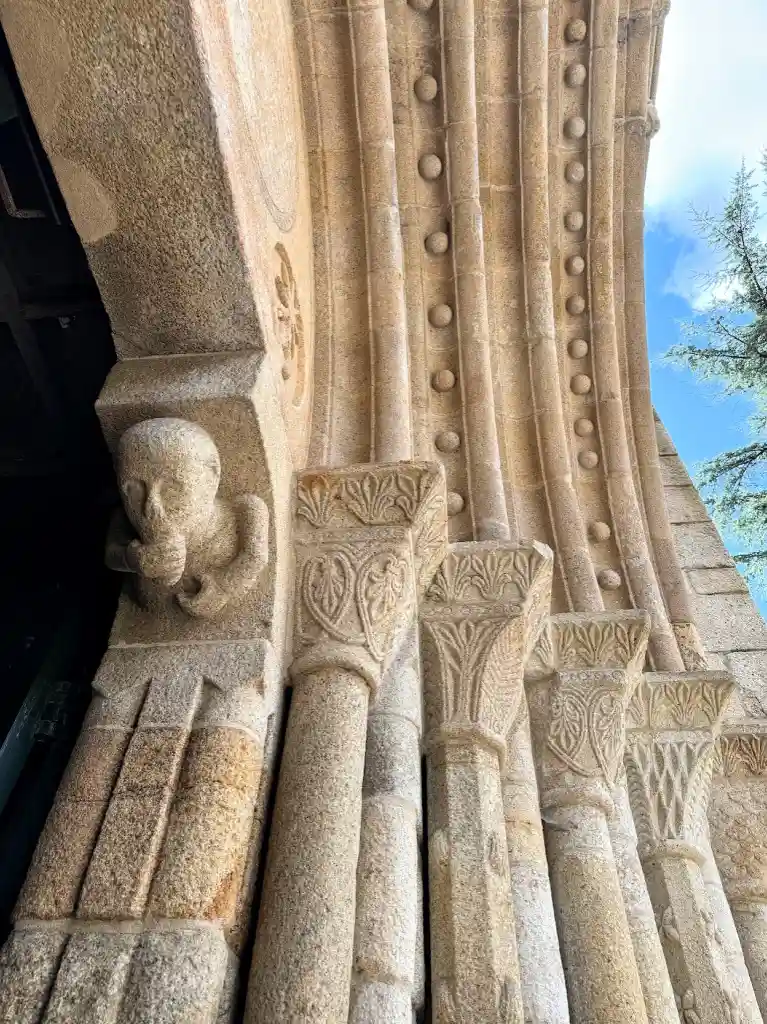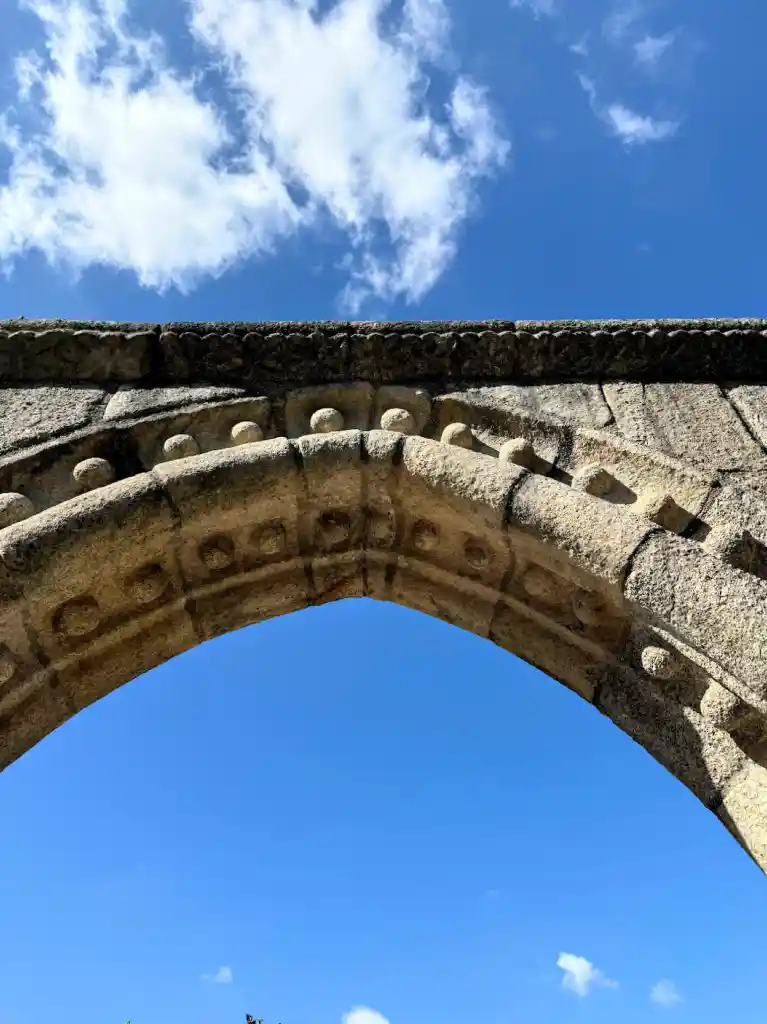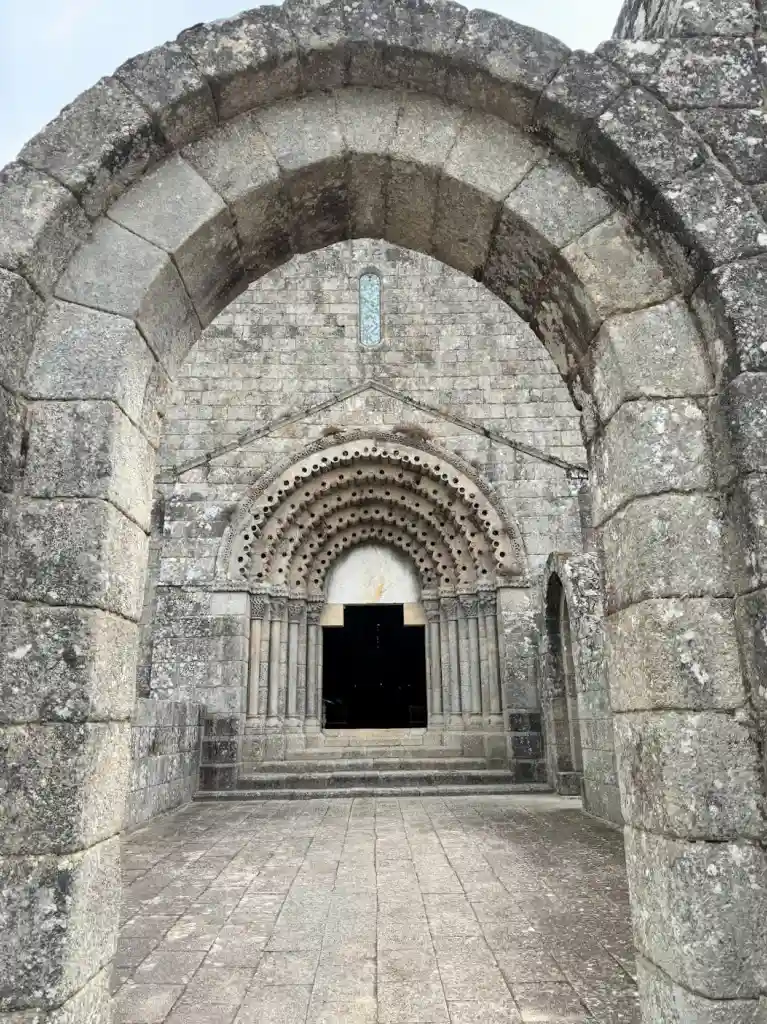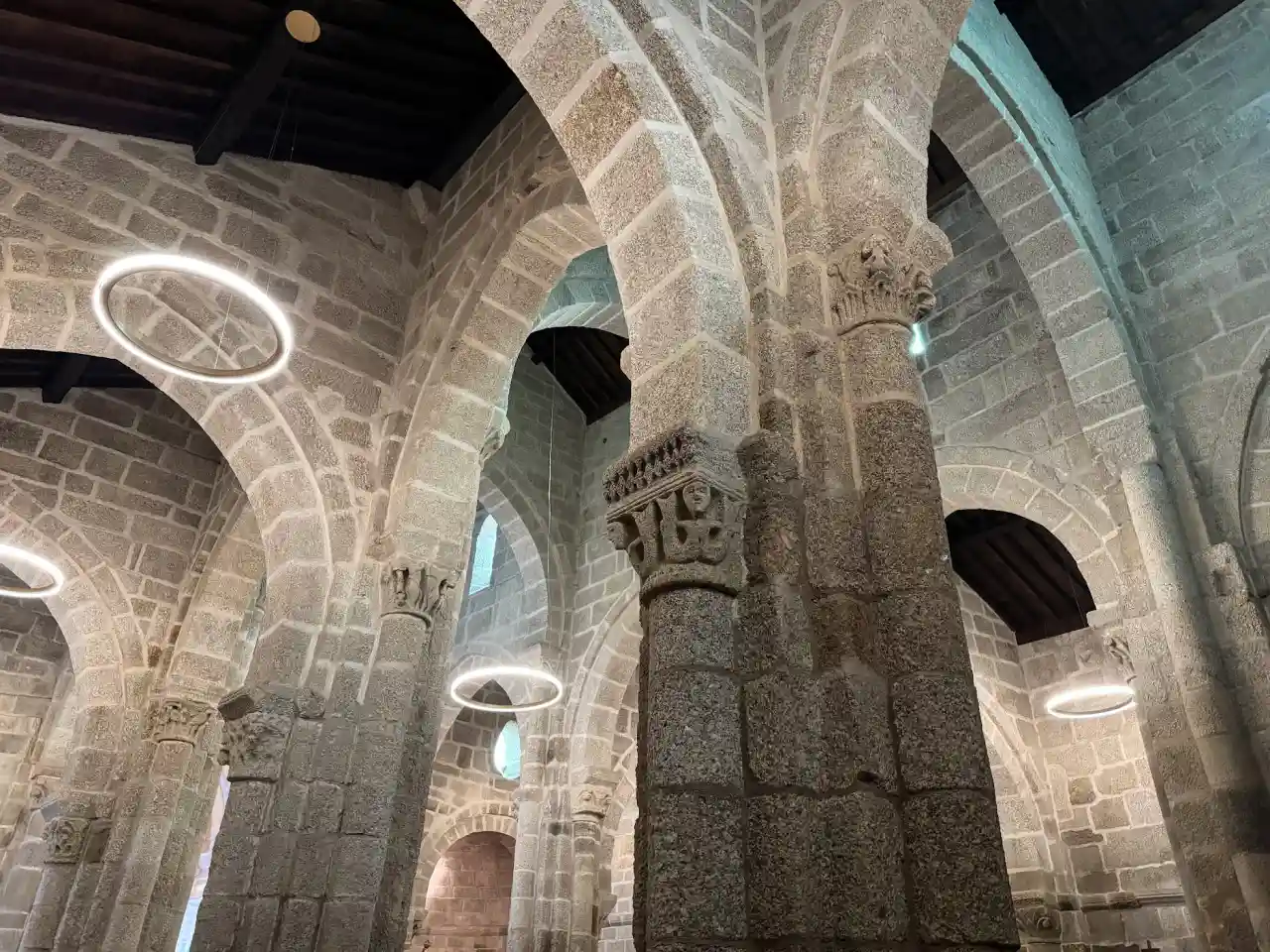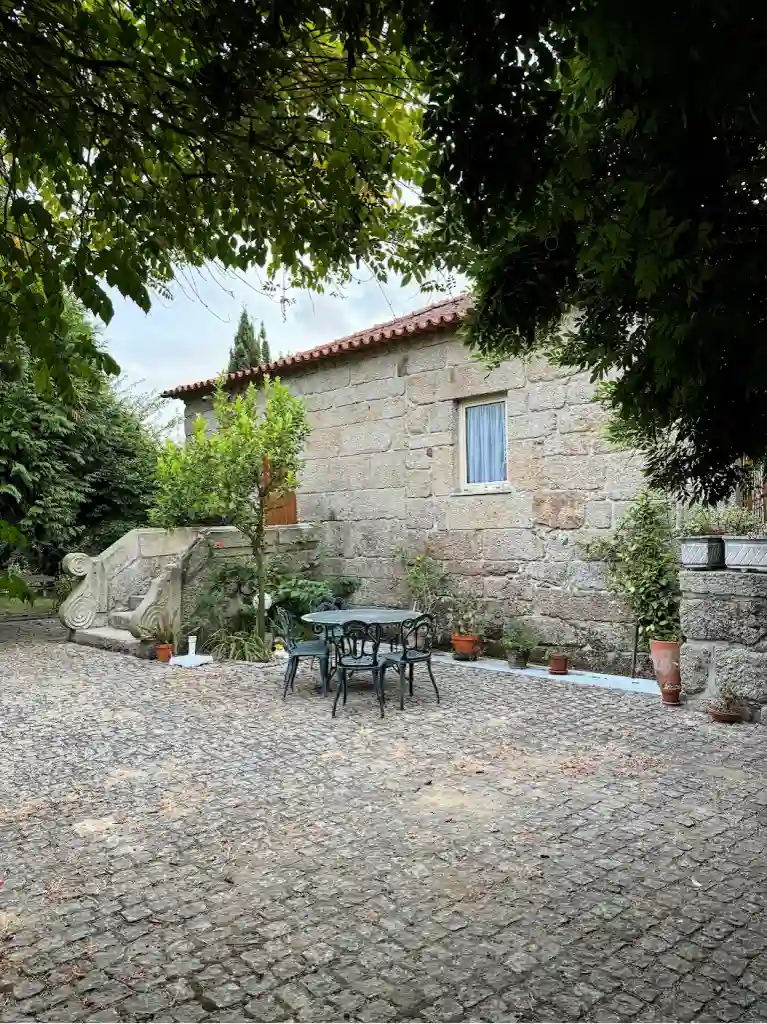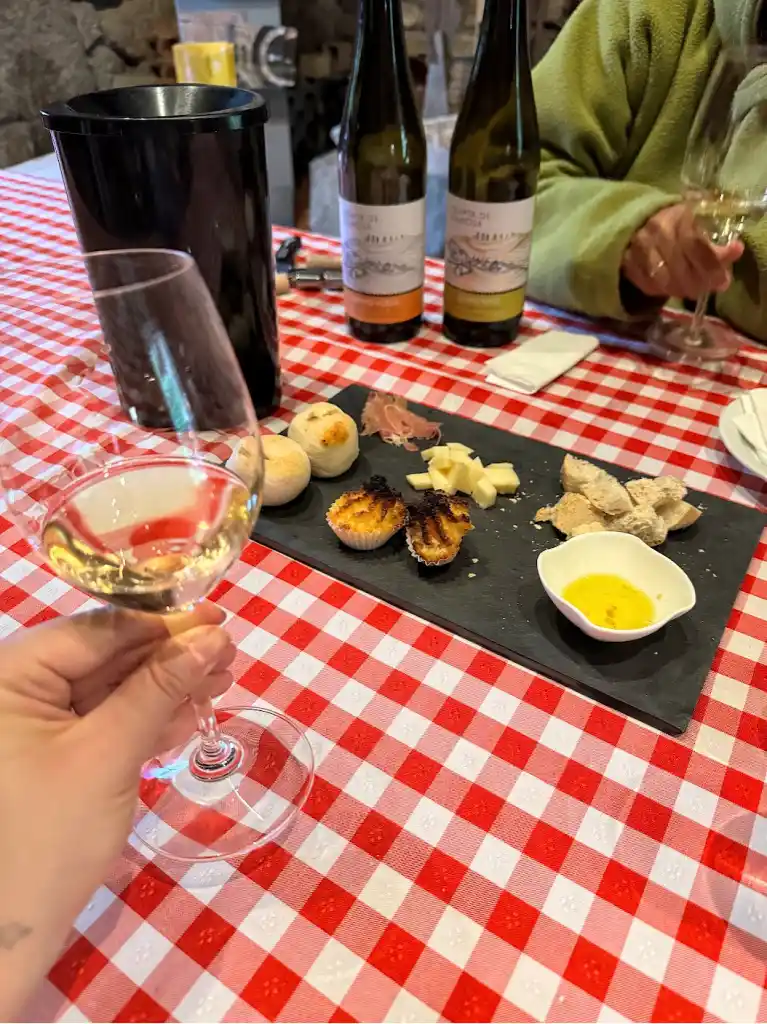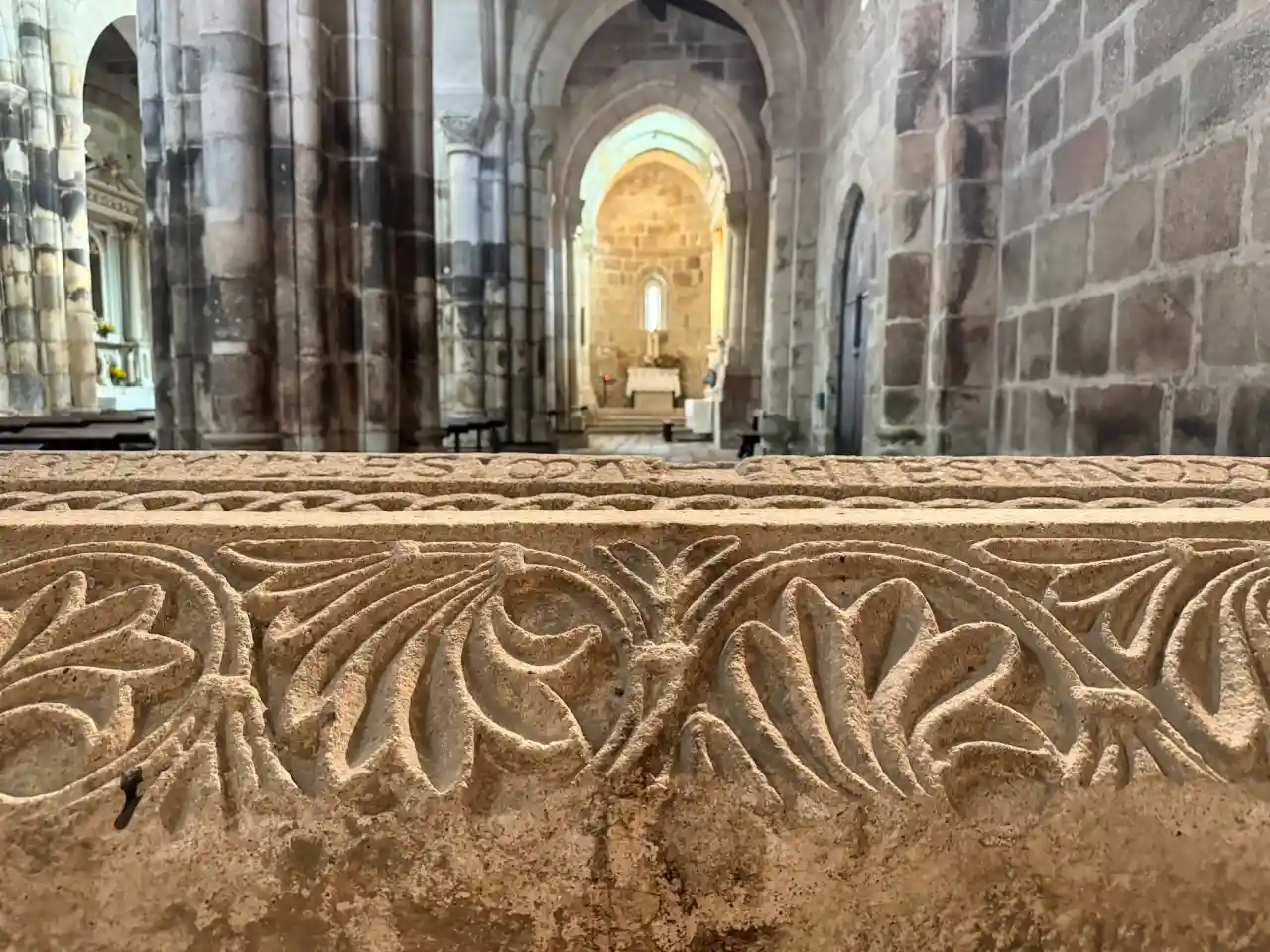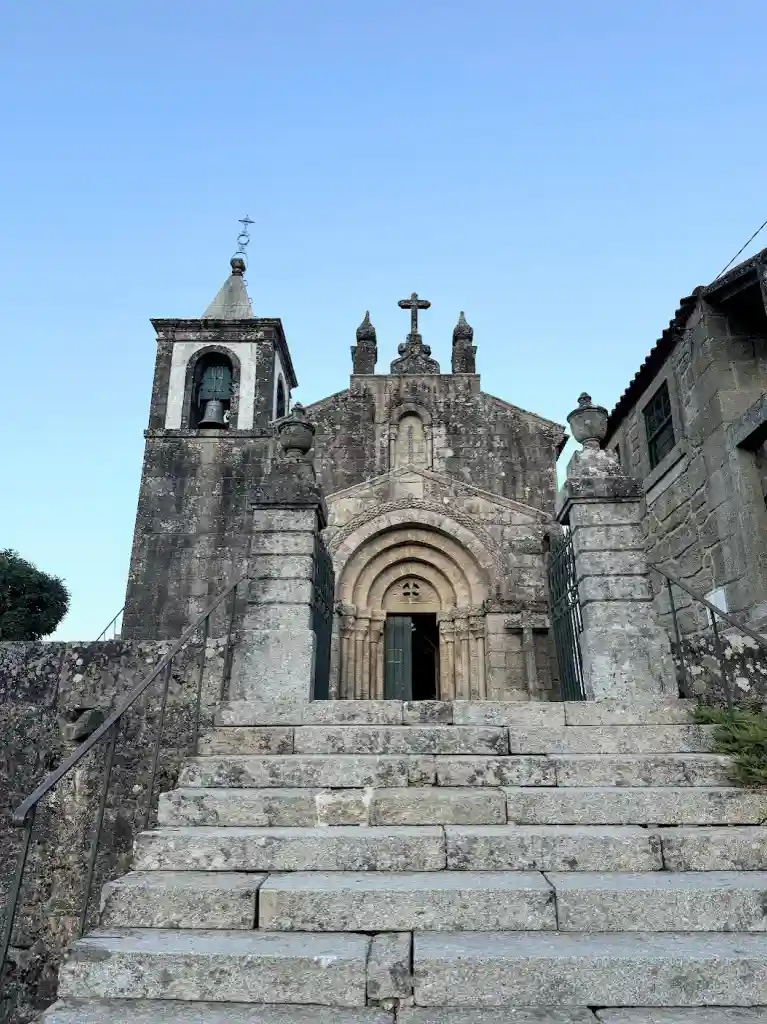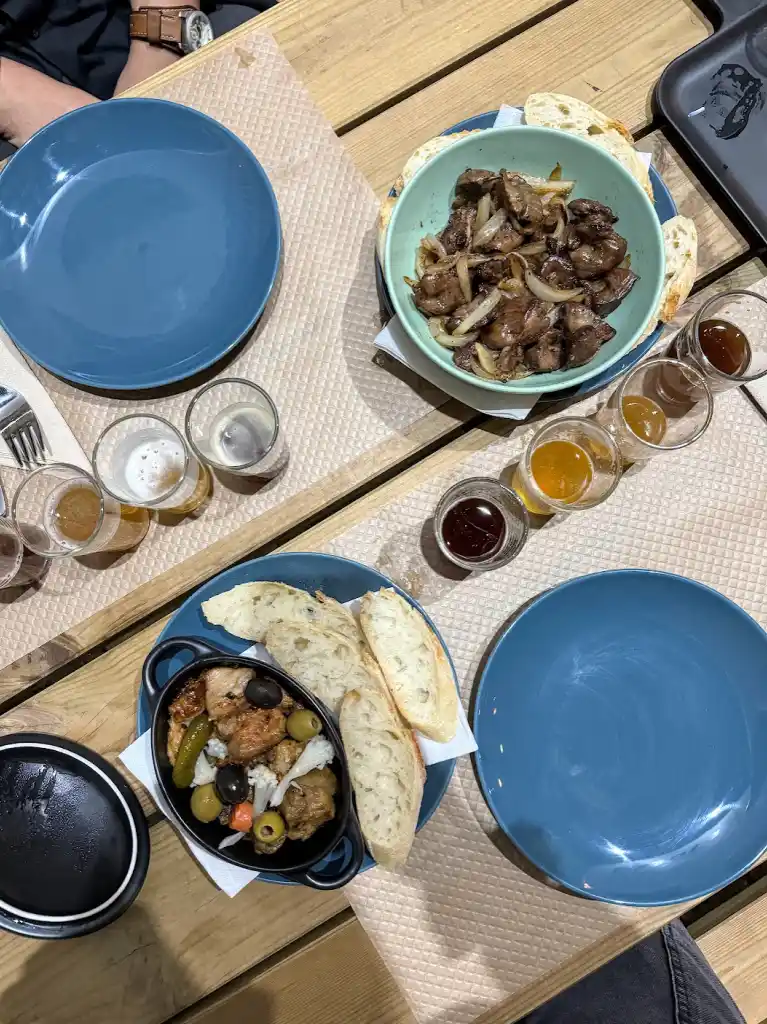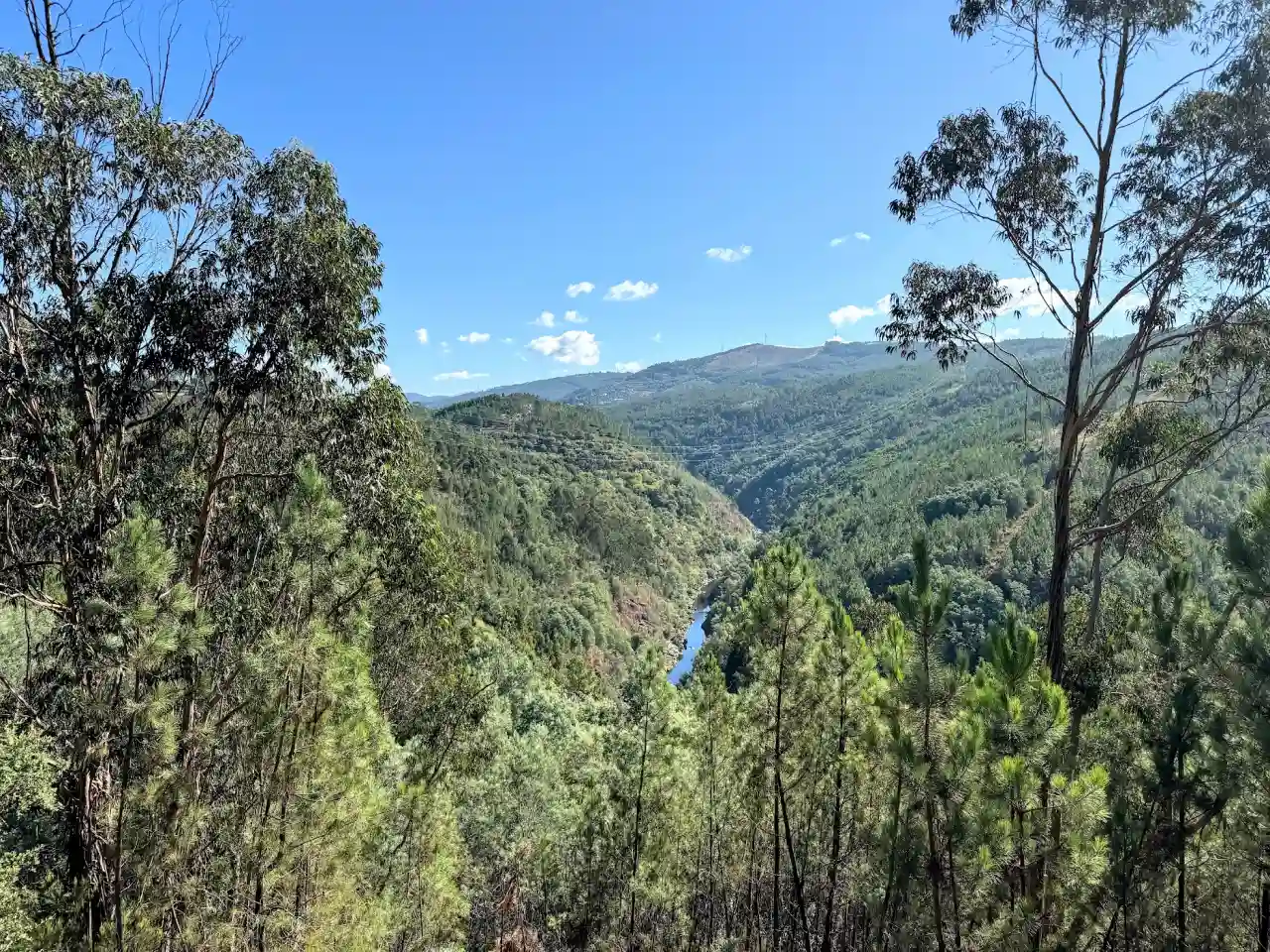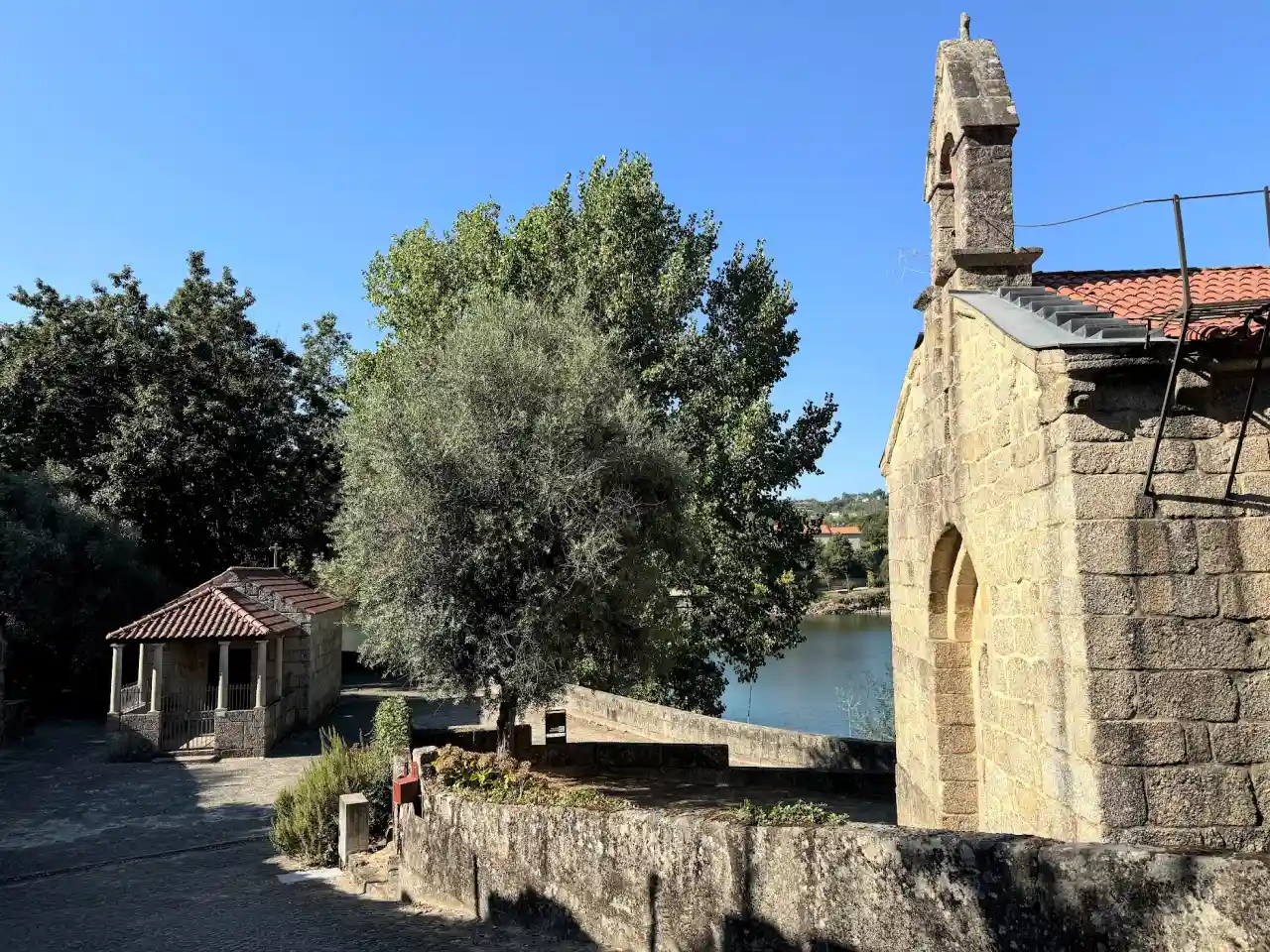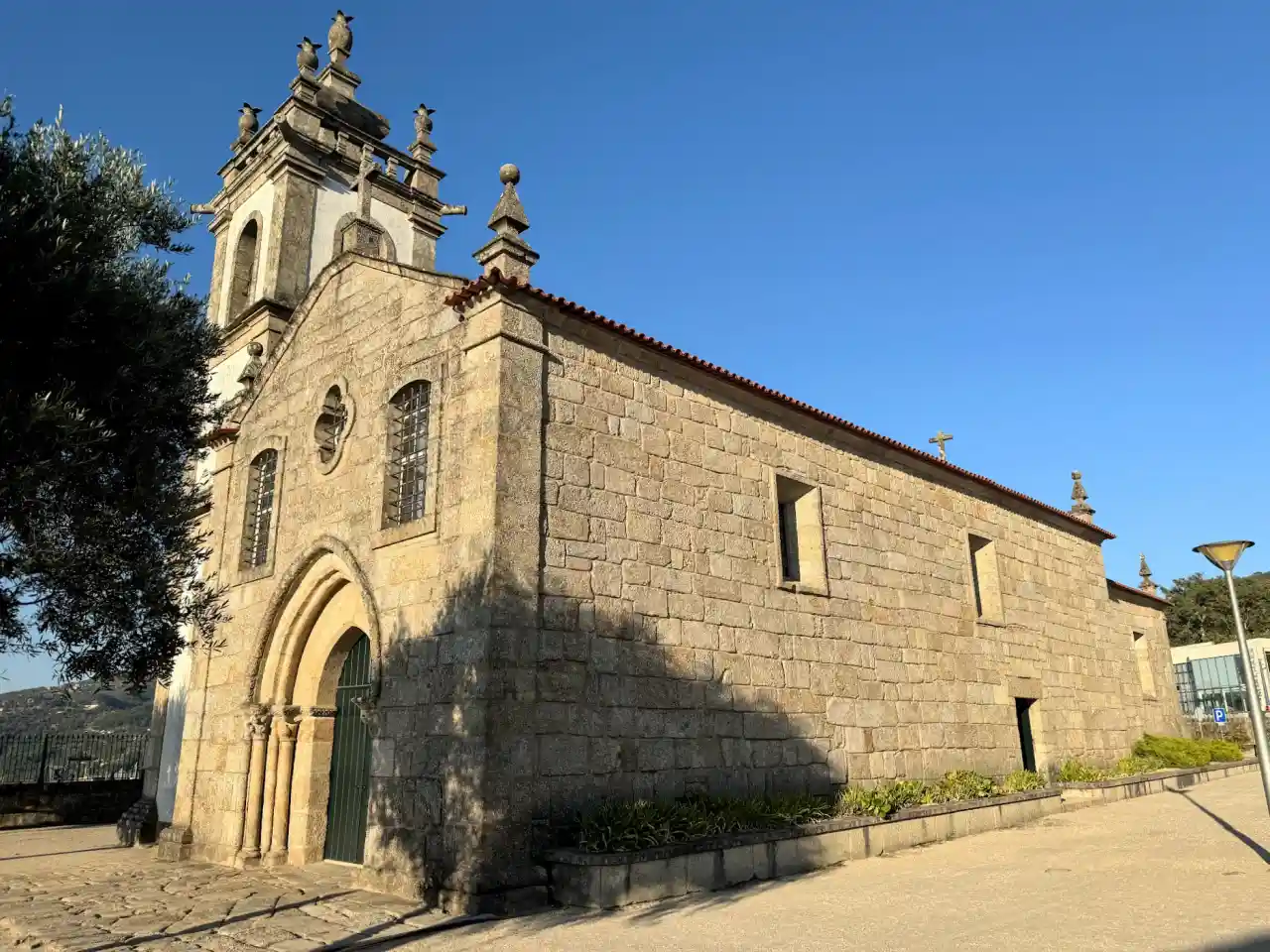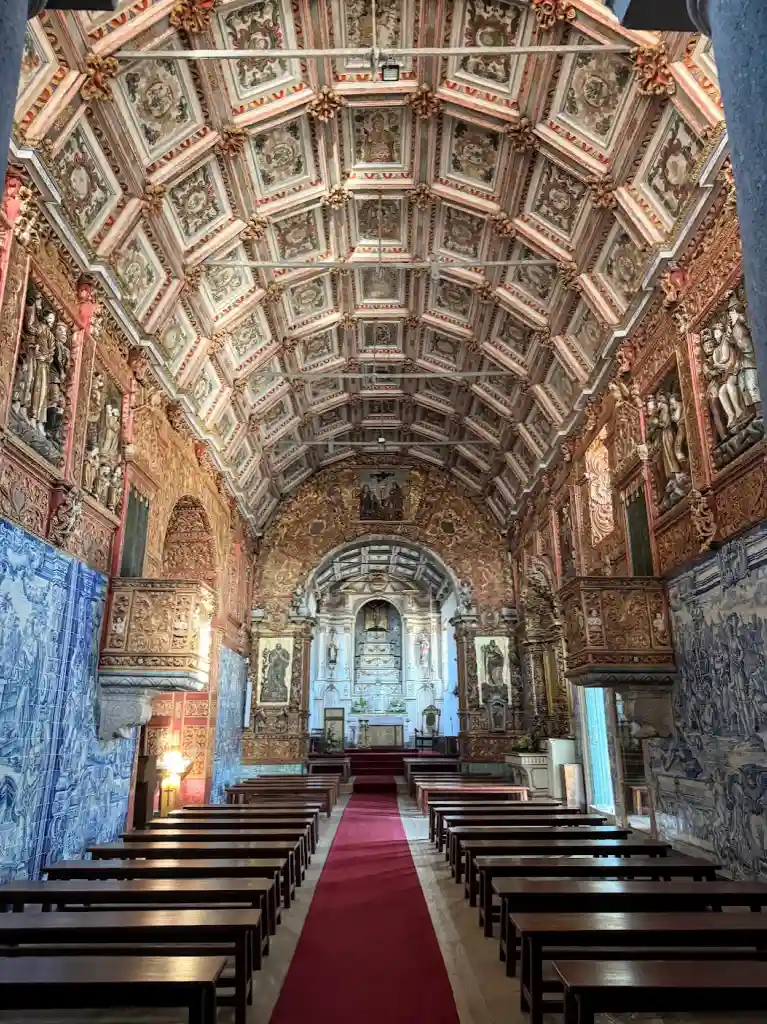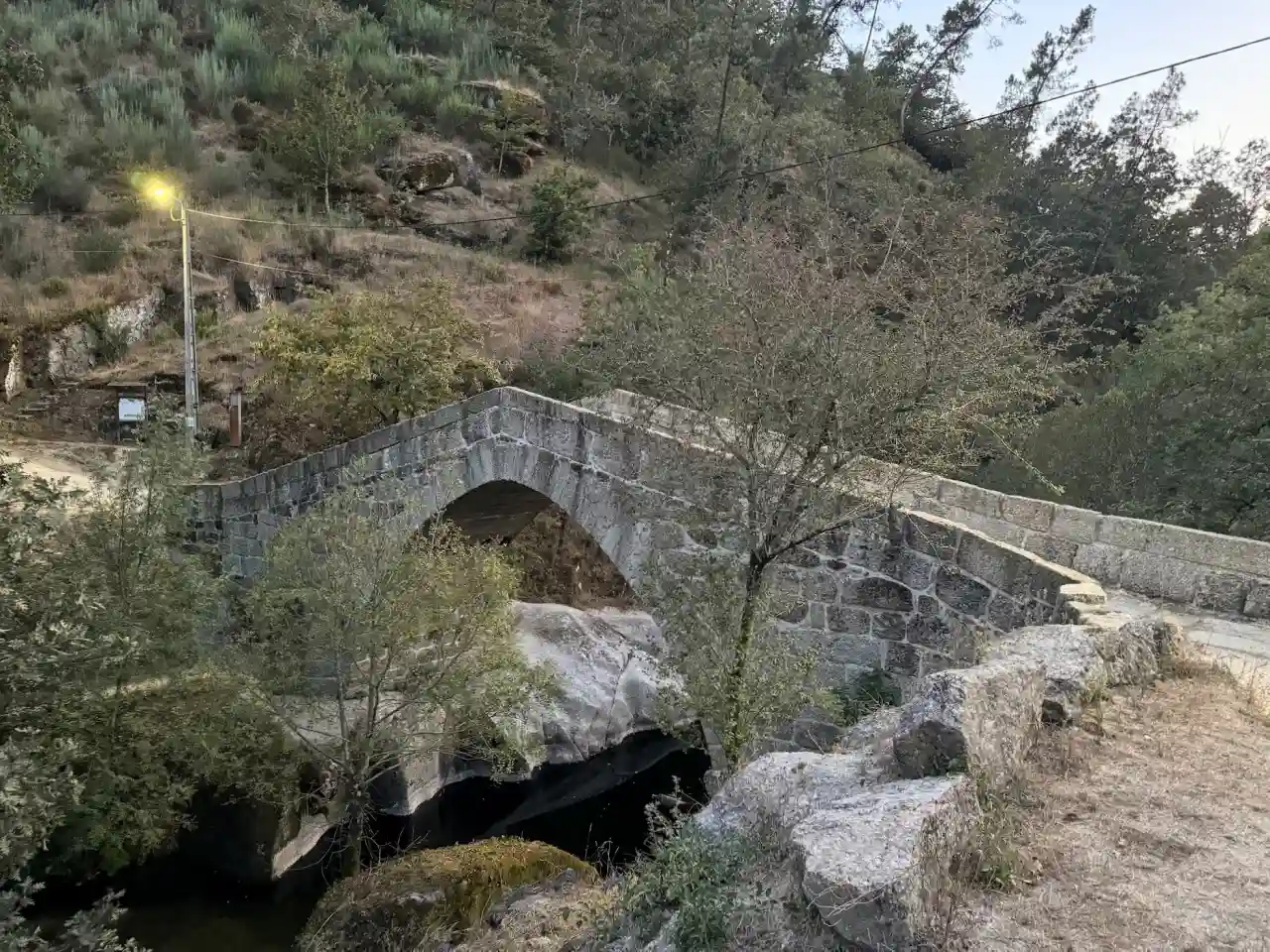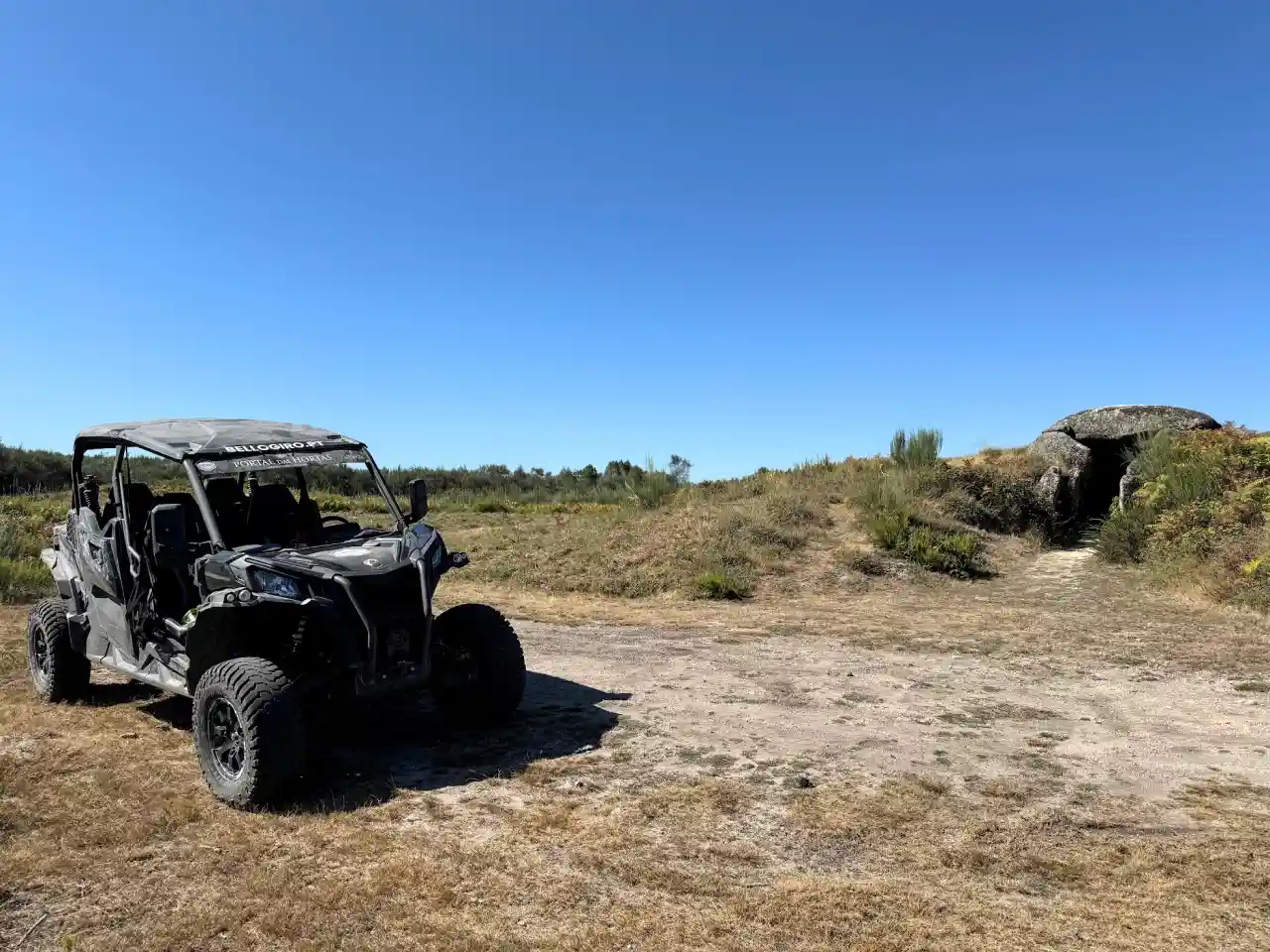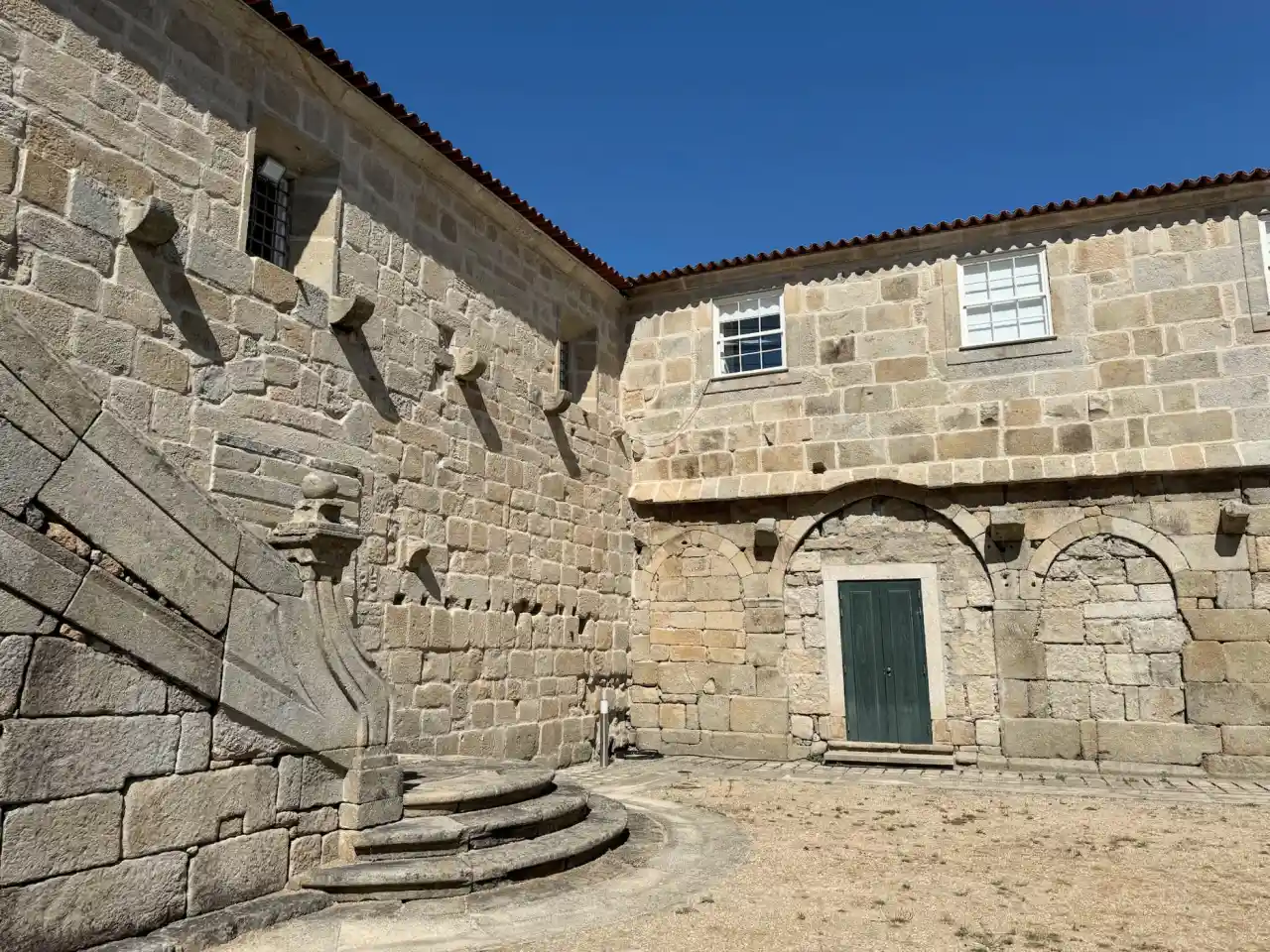Last week, I travelled back in time alongside the Romanesque route (Rota do Romanico) in northern Portugal. It’s a cultural route that takes you on an astonishing journey back to the Middle Ages and the time when the first universal European style, the Romanesque, appeared. The route covers an area of 2000 square kilometres and consists of 58 sites, including monasteries, churches, castles, bridges, and other beautiful monuments.
The Romanesque Architecture in Portugal
After exploring TRANSROMANICA’s sites in Slovakia and medieval monasteries in Serbia during the last few years, I travelled to Portugal to learn more about the medieval sites along the Rota do Romanico. They are a part of the Cultural Route of the Council of Europe, the TRANSROMANICA. It’s fascinating to think about the first universal European art ideas that appeared more than 1,000 years ago and were shaped within Romanesque architecture. The TRANSROMANICA helps you explore that medieval part of the joined European heritage.
Although many characteristics are the same, it’s even more surprising to see the regional uniqueness of the style in each European country. Portuguese Romanesque has always interested me because it looks so ancient. The edifices are built of stone, which gives them a monumental feel. You’ll rarely find any wall paintings in them (although they originally had them). But the star elements of these sites are their sculptural decorations, especially on their portals and capitals.
The Romanesque capitals along the Rota do Romanico are covered with animals, especially birds. Still, you’ll also see dogs, lions and boars. They are also decorated with beautiful floral and botanical themes. However, you’ll also spot people on them, too. A unique motif you’ll find on many church portals is half-pearls, which create such an elegant decoration.
The walls of the Romanesque sites in Portugal are filled with numerous stonemasons’ signs. When more workers had assignments in the same building, they marked the work they did with their own unique signature. It makes you imagine the busy construction area with sounds of stone carving, cranes lifting the blocks and a lively chat between the busy stonemasons to life.
Watch my video about the Rota do Romanico sites in Portugal:
Exploring the Rota do Romanico in Portugal
Although medieval architecture is mostly found in religious buildings, the Romanesque sites in Portugal are quite diverse, including castles, bridges, and memorials. Exploring them gives you an idea of how culturally rich the region of northern Portugal was in the past (and still is today).
Wandering alongside this historical route will be accompanied by stories, legends, and historical figures that established the Portuguese state. It’s filled with the rich taste of the cuisine of northern Portugal, cod made in a thousand different ways and sweet bites of the many variations of sponge cake and … cookies. You’ll dance into your day filled with exploring the art of Romanesque with the smell of coffee and finish it with a glass of Vinho Verde. All of your senses will be awakened in that picturesque region while searching for the traces of some past times. The times when the first Portuguese kings were creating their land, monks crafting the grapes into the wine and common folk watching some of the most fascinating Romanesque buildings rising in the region.
⤷ Read more: The Most Interesting European Myths and Legends
What to see on Rota do Romanico in Portugal in five days
I’ve spent five days exploring the Rota do Romanico in Portugal, mostly visiting some of its beautiful sites. They showcase all the beauty of the Romanesque style and are filled with history, legends, and symbolism. These sites are the stars of that unique route. Along the way, I also visited some of their partners, preparing special local sweets, organising tours, or providing unique experiences.
⤷ Read more: History of Travelling
Day 1 on Rota do Romanico
Interpretation Centre of the Romanesque in Lousada
I arrived in Porto on a morning flight from Amsterdam and went straight to my first stop, the Interpretation Centre of the Romanesque in Lousada.
Opened in 2018, it’s a great starting point for exploring Rota do Romanico. Its building is a modern structure inspired by the regional Romanesque heritage. The venue is home to an excellent exhibition dedicated to Portuguese history, medieval society, architecture, builders, and symbolism of the Romanesque style.
⤷ TIP: Rent a car in Porto and visit these locations on a road trip. This will give you more flexibility to enjoy this region at your own pace.
Monastery of Saint Peter of Ferreira
After learning more about the Romanesque in Portugal, it was time to explore some of the sites built during that time. While approaching the old Monastery of Saint Peter of Ferreira, I was fascinated by its stone decoration. The grey texture of the stone provides these monuments with an exquisite appearance. However, their sculptural decoration is what gives them personality. The main portal, with its circular decoration, is especially interesting in this place.
The Church of the Monastery of Saint Peter of Ferreira is unique on this Romanesque route because it has traces of the funerary narthex before its main entrance. It was a wonderful place to visit, setting a high expectation for the rest of the trip.
⤷ Read more: 25 Beautiful UNESCO World Heritage Sites in Europe
Tower of Vilar
Contrary to some monuments I explored on the TRANSROMANICA route in other European countries, which mainly had a sacral role, many preserved Romanesque sites in Portugal had a secular purpose. One of them is the Tower of Vilar. Located on top of a small hill, it was probably built in the second half or early 14th century.
Although, at first glance, it might look like it had a military purpose, that wasn’t the case. It was the home of D. Gil Martins of the Ribavizela family, who wanted to show their power and status with their impressive home. From its roof, you can still enjoy a fantastic view of the surrounding region.
Monastery of the Saviour of Travanca
Built in the 13th century, this monastery was one of the most powerful in the region during the Middle Ages. It was also one of my favourite places among the TRANSROMANICA sites in Portugal, especially because of its imaginative capitals. The church’s medieval appearance stands in stark contrast with its colourful Baroque sacristy.
Its tower is considered to be among the tallest built during the medieval period in Portugal. It’s also special because of its portal, which represents Agnus Dei.
⤷ TIP: Go wine tasting at Quinta de Lourosa!
This cultural route isn’t only home to beautiful Romanesque monuments but also to many authentic places that will help you immerse yourself even more in the local culture of northern Portugal. One of them is a family-owned wine producer, Quinta de Lourosa. While driving alongside the Rota do Romanico in Portugal, you’ll pass next to numerous beautiful vineyards. Quinta de Lourosa owns some of them and produces some wonderful Vinho Verde wines.
I went wine tasting there to learn more about that local type of wine. The grapes in the region get lots of sun while growing on the hills, water from the underground springs, and lots of cool wind from the Atlantic Ocean. All of that makes the Vinho Verde wines very fresh. Some also have a bit of a mineral taste, making them unique and tasty.
⤷ Restaurant recommendation: Distinto Francesinhas is a great place to try the local speciality, Francesinha. Officially a sandwich, it’s much more than that and a very interesting dish to try.
⤷ Hotel recommendation: I stayed at Casas do Souto during the first two nights of my trip. Located in the peaceful countryside, it’s a very nice place to have as a base while exploring some of these locations.
Day 2 on Rota do Romanico
Monastery of Saint Peter of Cête
My second day exploring Rota do Romanico was reserved for seeing more medieval sites in northern Portugal. Although I was woken up by heavy rain, the sun appeared in the morning, and the weather stayed sunny and beautiful until the end of my trip!
The first stop of the day was the Monastery of Saint Peter of Cête. What looks like a simple stone church from the outside hides the treasure of medieval curiosities in its interior. The monastery was founded in the 10th century and still has a strong Romanesque appearance. I especially liked the burial chapel at the bell tower, which is covered by some beautiful tiles, still probably imported from Andalusia in Spain. Some of the capitals with human faces are also fascinating. The monastery also has a preserved medieval cloister, a rare find along this Romanesque route in Portugal.
Monastery of the Saviour of Paço de Sousa
With its monumental size, beautiful rosetta window and decoration on its main portal, the Monastery of the Saviour of Paço de Sousa was one of my favourite stops alongside the Rota do Romanico in Portugal. Founded in the 10th century, it was an important Benedictine monastery.
This monastery was the birthplace of a sculptural decoration known as the “nationalised Romanesque“, which started influencing other Romanesque buildings in the region. An unmissable place in the church’s interior is the tomb of Egas Moniz de Ribadouro, who was the mentor of King Afonso Henriques.
Memorial of Ermida in Penafiel
I’m always fascinated by the differences between Romanesque sites in various European countries. I was amazed to stumble upon some of these unique memorials along the Rota do Romanico in Portugal. Although there are seven of them preserved in the whole country, their purpose is still unclear. They’re probably linked to honouring the dead as a part of funeral processions or remembering someone’s memory. This one, the Memorial of Ermida in Penafiel, was probably built in the mid-13th century.
⤷ Read more: The Scariest Paintings in Art History
Interpretation Centre of Romanesque Sculpture
During the archaeological discovery in 2006, around 70 stone elements with Romanesque decoration were discovered in a location of an old house. It’s believed that they belonged to the Church of Saint Peter of Abragão. That vital discovery initiated the construction of the Interpretation Centre of Romanesque Sculpture.
It’s a great place to visit today, not only to see these decorated stones once belonging to the Romanesque church but also to learn more about the richness of Romanesque sculpture.
⤷ TIP: Visit Pão de Ló de Margaride House!
When you’re a bit tired of the Middle Ages, explore Portuguese gastronomy. The region is well known for its sponge cakes and cookies, and one of the best places to try some of them is Pão de Ló de Margaride House. The recipe for it has been passed from generation to generation since 1730, and it was even enjoyed in the Portuguese court in the 19th century.
They are still produced in the same small factory you can explore during the guided tour, which finishes with a tasting of some of these delicacies. They also make a nice souvenir to bring home.
Iberian Ensemble concert at the Church of Unhão
Although none of these monasteries are home to monks anymore, many of them are brought to life as occasional music venues. They have great acoustics, and their interiors serve as a wonderful setup for small concerts. During my visit, I listened to the Iberian Ensemble concert at the Church of Unhão and truly enjoyed it.
⤷ TIP: Rota do Romanico organises numerous events alongside their route. Check out their website or social media channels to see what’s happening during your visit.
⤷ Restaurant recommendations: Rocha (I ate a fantastic cod there) & Fidélis (be sure to try some beers inspired by the sites from the Rota do Romanico route there or enjoy a beer tasting as I did).
Day 3 on Rota do Romanico
The medieval sites you get to explore alongside this Romanesque route are located in the beautiful nature of northern Portugal. A wonderful way to enjoy its fantastic scenery and vistas is by going on a cycling ride on the Tâmega eco-track. I met Bruno from Pedal Quest Tours, who joined me on the ride between the Church of Gatão and the Celorico de Basto Station.
There is something special about exploring the world from your bicycle seat. We cycled through the beautiful forest and Vinho Verde vineyards and enjoyed views of the Tâmega River. The eco-trail follows former train tracks, so the ride is quite easy and with an even elevation. It’s so surprising to see the old train stations, which are now turned into small hotels, cafes, and restaurants. We finished our ride with a small wine and local cold cuts tasting.
⤷ TIP: I recommend exploring a part of the Rota do Romanico this way. I had an electric bike, which made cycling even easier.
Interpretation Centre of the Church of Veade
Opened in July 2024, this Interpretation Centre is located next to the Church of Saint Mary of Veade and is entirely dedicated to it. The church was rebuilt in the 18th century by the Order of Malta, so you can see some of its original stone fragments at this interpretation centre.
⤷ Read more: 20 Most Iconic Churches in Europe
Castle of Arnoia in Celorico de Basto
My final dissertation at the University was about medieval castles, so I always have a sweet spot for them. That’s why I was so excited to see the only one on this Romanesque route in Portugal, the Castle of Arnoia. And it didn’t disappoint!
Located on the top of a hill, it overlooks the hilly region covered by vineyards. You can enter its thick-wall tower and climb to its top floor, from which you can enjoy a fantastic view.
⤷ Read more: 15 Most Beautiful Royal Palaces in Europe
⤷ TIP: Visit Amarante!
Amarante was a small town that really surprised me during my journey alongside the Rota do Romanico. It’s famous for its stunning stone bridge and the São Gonçalo church and monastery. This charming town is home to very unusual local sweets, the phallus-shaped St. Gonçalo cakes you’ll find all over that lovely town.
Amarante has been home to many exceptional artists and writers throughout history, and the Amadeo de Souza-Cardoso Museum offers a chance to learn more about them.
Monastery of Saint Mary of Pombeiro
The last stop of my day was the Monastery of Saint Mary of Pombeiro, which quickly became one of my favourite sites alongside the route. It used to be one of the most important Benedictine monasteries in the region. The church was built in the 12th and 13th centuries. However, the church and the monastery were rebuilt later, so the remains of the Romanesque style are still visible at its main portal and the apses.
You can also find the remains of its monastery, with the inner courtyard walls covered in beautifully painted tiles. The monastery’s beautiful location in the middle of a valley gives it a special ambience.
⤷ Hotel recommendation: Des Arts Guesthouse (I stayed there for the last two nights of my journey; it has a perfect location, nicely decorated rooms, and a delicious breakfast. Don’t be misled by its name; you can choose between the shared, hostel-like rooms and the private hotel rooms, which I had).
⤷ Restaurant recommendation: Taberna don Rodrigo (with its lovely ambience and delicious sandwiches, it’s an excellent place for lunch) & Zé da Calçada (overlooking the Tâmega River, they serve delicious local Portuguese food in a lovely restaurant setting)
Day 4 on Rota do Romanico
The area of the northern Portugal has many thermal springs, and you can enjoy their therapeutic features at some of the spas in the region.
⤷ TIP: I started my fourth day by visiting the Amarante Pure Termas & Spa. It’s in the city centre, so it’s nice to visit it if you stay in that charming town. I tried the Vichy massage, which was a new but enjoyable experience.
Church of Sobretâmega & Church of Saint Nicholas
Built on the River Tâmega’s opposite sides, these two churches serve as its guardians. A bridge connected them in the past, but it’s long gone. The simple decoration of the Church of Sobretâmega testifies it was probably built at a later date, so it already shows the appearance of the late Romanesque style. The neighbouring church of Saint Nicholas has a similar layout and style, being a great example of the so-called “Resistance Romanesque“. Inside it, you can see the remains of wall paintings, showing that the church was probably entirely covered with them before.
⤷ TIP: Visit Carmen Miranda Museum!
One of the biggest pop-culture, Broadway and Hollywood stars of the first half of the 20th century, Carmen Miranda, was born in this region. A small museum dedicated to her, Museu Carmen Miranda, is located in Marco de Canaveses and is a great place to visit and learn more about that remarkable woman.
Church of Soalhães
The Church of Soalhães was one of the most surprising places I visited, alongside the Rota do Romanico in Portugal. From the outside, it is a very simple stone church. However, once inside, I was stunned by its eclectic, colourful interior. The lower parts of the walls are covered in white and blue painted tiles, and its upper floors have rich, colourful overpaint. You can spend hours inside exploring all the stories and characters represented. It’s a special place that shouldn’t be missed!
⤷ TIP: Another wonderful place to visit and try some local sweets is Casa dos Lenteiroes. It’s been run by the same family since 1819, and they produce delicious sponge cakes and butter cookies.
Bridge of Arco in Marco de Canaveses
Have you ever seen a Romanesque bridge? I hadn’t before visiting the Bridge of Arco on Rota do Romanico. Crossing the Ovelha River, it consists of a single pointed arch, giving the bridge its name. While walking on it, I felt as if I was travelling along the ancient medieval path. It was one of my favourite locations along the route.
⤷ Restaurant recommendations: Albufeira (a great place to eat fish and seafood; they also have an excellent selection of cakes and serve a great Porto wine)
Day 5 on Rota do Romanico
On the fifth day of exploring these fascinating sites, I went to Aboboreira Mountain. The scenery was so beautiful there, and it seemed that after every curve of the road, an even more mesmerising landscape emerged.
⤷ TIP: This area is filled with fun things to do, and I started my fifth day with one of them: I went on a buggy ride with Bello’Giro. It was hard to decide what was more exciting: drifting on some of its mountain roads, riding on a very steep, narrow path between the trees, or trying to drive the buggy myself. It was a fun and terrifying experience at the same time, but definitely something I enjoyed very much.
Monastery of Saint Andrew of Ancede in Baião
This monastery is one of the best-preserved locations along the Romanesque route. It was a vital economic and cultural place run by the Augustin monks during the Middle Ages. The monastery was a significant wine producer back then exporting their wines all the way to the Flanders. They are still producing the Lagar do Convento wine today (you can buy it at their gift shop). The monastery has been turned into a visitor centre today, and you can visit it during one of the guided tours organised daily. You can still explore different areas of the monastery and learn how they were used back when it was still active.
The octagonal Chapel of the Lord of Good Delivery is a unique place to visit in its complex. Built in the 18th century in the Baroque style, its interior is transformed into a theatrical narration of Christ’s life. Although it is a small space, you could delve into the details of its decoration for hours. It’s an exquisite chapel, unique in its decoration in Portugal and throughout Europe.
After exploring the monastery, I continued my ride towards the Douro River. It’s fascinating how the scenery changes once you get there. The high peaks of the Aboboreira Mountain quickly turned into the lovely green hills flanking the river. The Douro River is so vast that it looks more like a lake than a river in some areas, reminding me of Lake Como in Italy.
⤷ TIP: To enjoy this beautiful scenery even more, I was once again joined by Eduardo from Bello’Giro. They provide water scooter rides at Douro River. It was the first time I tried it, but me and water scooter was love at first sight, and I’m sure it won’t be the last time riding it.
If you’re up for enjoying some beautiful mountain views, then a nearby Belvedere of Teixeirô is a lovely place to go and enjoy the view of the Douro River valley.
Church of Saint Mary Major of Tarouquela
This church was part of the female Benedictine monastery founded there in the 12th century. Its main portal is especially interesting, with the two dogs having human figures in their jaws. Although they might look terrifying, their purpose was to keep evil away. The capital in the church’s interior and exterior is covered with various ornamentation. The most interesting is the exhibitionist, showing his intimate parts to the observers.
⤷ Read more: 20 Archaeological Sites you have to Visit in Europe
Memorial of Sobrado in Castelo de Paiva
This memorial is different from the other funerary monuments on the route because it doesn’t have an arch. It was probably built in the mid-13th century and is unique because it’s decorated with Greek crosses and swords.
I finished my journey alongside the route by enjoying a sunset at the Belvedere of São Domingos, enjoying a fantastic view of the region I had explored for the past five days. Knowing that scattered in that beautiful scenery are the remains of the lost world of the Romanesque made me understand how special that place is.
⤷ Hotel recommendation: Hotel Porto Antigo – Located on the bank of the Douro River, it’s one of the most beautiful hotels in the region.
More places to explore on Rota do Romanico
Five days wasn’t enough to see all the fantastic Romanesque sites along this cultural route. So, here are a few more places you might find interesting to explore. The Monastery of Saint Mary of Cárquere was by legend founded by Egas Moniz, the governor of the first Portuguese king, Afonso Henriques.
Built in the 13th century, the Church of Saint Martin of Mouros is unique because of its facade. Although it already shows elements of the early Gothic style, the construction of the Church of Saint Mary of Barrô is linked to the family of Egas Moniz. A unique place to visit is also the Bridge of Panchorra, a lovely example of traditional architecture using irregular stones as a building material.
Practical tips for visiting the Rota do Romanico in Portugal
⤷ How to get there? I flew to Porto, which is well-connected to many European airports. My tip is to rent a car there and explore the Rota do Romanico on a road trip.
⤷ How to get around the Rota do Romanico? The route is well-marked with brown signs, which you’ll find all over the Rota do Romanico. You can also download their app and use the map within it.
⤷ How to get inside the sites on the Rota do Romanico? Since they are a bit dislocated, you should plan your visit in advance. Choose the sites you’d like to visit and contact Rota do Romanico so they can open them for you. You can decide if you’d like to have a guided tour around them (which I absolutely recommend) or just visit them on your own.
I visited these sites during the press trip organised by the TRANSROMANICA, Rota do Romanico, and their partners. Many thanks to all of them for organising this trip for me. As always, all opinions are my own.
Read more about the TRANSROMANICA sites in Europe:


